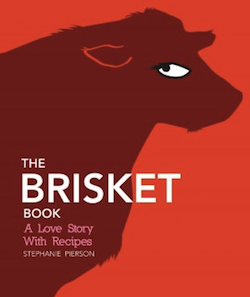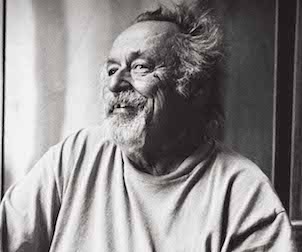by Dean Tudor
World Wine Watch‘s Dean Tudor returns with his lists of food and wine books in time for the 2011 holidays. Click here to see the whole series (to date). Look for these books at Good Food Fighter boutiques like The Cookbook Store or Good Egg. – Ed.
For the more literate person, there are the histories and “memoirs” of writers, chefs, and wine people. Some have called these memoirs “creative non-fiction”, many with embellishments and gilding. And most of them suffer from a lack of indexing, which makes it difficult to find what the writer said about another person or subject. But this also avoids the potential for lawsuits and disjointed noses. Nevertheless, they are rewarding to read. Who cares about poetic license? Here then are some that stood out from last year’s run, and any of them would make great gifts for the reader. Here we go, in no particular order (and one of them is a novel)…
SUMMERS IN FRANCE (Gibbs Smith, 2011, 224 pages, $35 US) is by Kathryn Ireland, an interior designer who lived near Toulouse. This is about country life with three kids in France, in the Tarn-et-Garonne area in south France. She records events, including her excursions to towns, markets, the house she lives in, her cow barn, gardens, and outdoor eating. It is also useful for the quality photos.
FOLKS, THIS AIN’T NORMAL (Center Street, 2011, 361 pages, $28.99 CAD) is by the irrepressible Joel Salatin, a third-generation Shenandoah Valley organic farmer feeding some 4000 families and 50 restaurants. This is his seventh book on local farming issues. Here he gives “a farmer’s advice for happier hens, healthier people and a better world”, with material from his earlier self-published books and magazine writing. Eclectic topics abound, including getting the US government out of the food regulation business. And thank God for an index which ties it all together!! Good agrarian reading.
FOUR KITCHENS (Grand Central Publishing, 2011, 337 pages, $27.99 US) is by Lauren Shockey, who trained at the French Culinary Institute and has an MA in food studies at NYU. This memoir refers to her cooking career in New York, Hanoi, Tel Aviv, and Paris – working in four kitchens. In a sense, hers is a female perspective and counterpart to Anthony Bourdain. While there is a scattering of recipes, the preps are not indexed and could be hard to find again.
SEMI-SWEET: A NOVEL (Hachette, 2010, 2011 in North America, 365 pages, $15.50 CAD) is the story about love and cup cakes. It’s by Roisin Meaney of Ireland, a clone of Maeve Binchy-style. The heroine opens a cup cake shop in Clongaruin, Ireland – just as her long-time boyfriend leaves her. These trials and tribulations, coupled with food, are sure to pass the time nicely over the holidays.
BREAKING BREAD: RECIPES AND STORIES FROM IMMIGRANT KITCHENS (University of California Press, 2010, 2011, 283 pages, $18.95 US soft covers) is about recipes and stories from immigrant kitchens. This is the paperback reprint of the 2010 book. Lynne Christy Anderson, an academic at Boston College, pulled it together for the “California Studies in Food and Culture” series, number 29. These are stories of hand-rolled pasta, homemade chutney, backyard gardens, local markets, foraging, and so forth, as recounted through memories, recipes and culinary traditions of immigrants. The preps include dolmades (Greece), adobo (Philippines), peixada (Brazil), and quesadilla (Salvador). Well-worth a read, although an index might have been useful for the 25 stories and 25 recipes.
THE BRISKET BOOK: A LOVE STORY WITH RECIPES (Andrews McMeel Publishing, 2011, 208 pages, $34.99 CAD hard covers) is by food writer and cookbook author (at least six) Stephanie Pierson. So far as I know, this is the first cookbook devoted to brisket, with recipes coming from celebrity chefs and authors. Of course, the book is meant for meat-lovers, principally that guy who is hard to buy for at Christmas time. It is loaded with personal accounts and stories and memoir-like material from connoisseurs and chefs. I have always found it difficult to get brisket in Toronto: it seems to go directly to restaurants or smokehouses. Along with chicken livers and sweetbreads, brisket is definitely a speciality, “order in advance” item. So here are a variety of 30 preps, interviews with chefs, photos, graphics (including cartoons), all put together in a fun sort of way (complete with index).
MAN WITH A PAN (Algonquin Books, 2011, 326 pages $18.95 CAD) is from John Donohue, an editor at the New Yorker. This is a book about men who cook for their families. He’s found 34 well-know culinary men such as Mario Batali, Mark Bittman, Mark Kurlansky, and Thomas Keller who tell about their cooking done at home: their roles, how they came to it, and how they feel about it.. Along the way are revealed the best times to shop, assigning gender roles to gay couples, explaining vegetarianism to kids, advice on scheduling, and the like. It’s illustrated with 21 food cartoons from the New Yorker, and it includes recipes (unfortunately, unindexed). Some writers have suggested books and cookbooks to read such as those of Julia Child and Marcella Hazan. There’s an uneven writing style but the spirit is terrific for the stories.
NEW MEXICO TASTY RECIPES (Gibbs Smith, 2011, $8.99 US paper covers) is by Cleofas M. Javamillo. It’s only 34 pages long, with 75 recipes, but it was originally published in 1939. These are Spanish recipes as used in New Mexico, and include pipian, albondigas, chile caribe, pozole, quesadias, potajes sabroses. Additional material covers the traditional use of Hispanic food from other sources. There are some menus, and the preps run in narrative style. This can also double as a stocking stuffer for that particular person.
READING BETWEEN THE WINES (University of California Press, 2010, 2011, 189 pages, $17.95 US paper covers) is by Terry Theise, an award-winning wine writer and US wine importer. He makes the case for artisanal wine producers in this idiosyncratic memoir-like account of the beauty of the wine experience. Of course, it helps that he imports such boutique wines. He specializes in German and Austrian wines, plus Champagnes, and much of his focus is on these regions. His is another well-reasoned argument against the 100-point scale of measurement of wine. A short book, but an enjoyable read for the wine lover in your life.
EATING MUD CRABS IN KANDAHAR (University of California Pr., 2011, 215 pages, $27.50 US hard covers) has stories of food during wartime, written by foreign correspondents. This is not macho food, or even peasant food. This is about eating food under extreme conditions during the past 20 years. Look to a North Korean dictator who gorges while others starve, or drinking with an IRA cell, or siege food in Bosnia. Other countries with “war zones”: Pakistan, Gaza and Israel, El Salvador, Haiti, Iran, Afghanistan, Somalia, Iraq, Georgia, Rwanda, It is all about survival and emergency rations too. Some of it is humour as well. The book reminds us to be thankful over the Holiday season.
MERCHANT OF SONOMA: CHUCK WILLIAMS (Weldon Owen, 2011, 245 pages, $26.95 CAD hard covers) is a generous biography of one of the USA’s leading food pioneers. For over fifty years, the founder of Williams-Sonoma has introduced everything from the basic to the sophisticated kitchen equipment for the home. It’s a standard biography by William Warren, but it is enlivened by the photographs provided by Williams and his family. A first rate easy read for the holidays, with 34 indexed recipes covering all courses.
DINNER WITH TENNESSEE WILLIAMS (Gibbs Smith, 2011, 176 pages, $19.99 US) is by Greg Picolo, chef operator for The Bistro at Maison de Ville in New Orleans, located across a hidden French quarter courtyard from where Williams lived. Picolo annually puts on a Williams-themed menu dinner during the Williams Literary Festival. Others involved here are Kenneth Holdritch, a Williams academic, and Troy Gilbert, a free-lance journalist. The memoir details Williams living in New Orleans and his association with food in his writings. There are 100 recipes, including such Williams’ faves as Waldorf salad, crawfish callas, veal sweet breads, and pecan-crusted black drum fish.
AMERICA THE EDIBLE (Rodale, 2011, 272 pages, $18.50 CAD) is by television host of the US Travel Channel Adam Richman. It’s a history of dining from nine US cities. This is the paperback reissue of the 2010 hard bound book. He’s covered Los Angeles (twice), Honolulu, Brooklyn, St. Louis, Cleveland, Austin, San Francisco, Portland Maine (lobster roll), and Savannah. There’s about a half-dozen restaurants listed and commented on, per location. Nine recipes are scattered. There are maps, quirky comments, and lots of memoirish materials. If you know American cities, then you might want to read this book over the holidays.
 Dean Tudor is a Ryerson University Journalism Professor Emeritus, The Treasurer of The Wine Writers’ Circle of Canada and creator of Canada’s award-winning wine satire site at fauxvoixvincuisine.blogspot.com. Visit Dean’s websites at deantudor.com and gothicepicures.blogspot.com. His motto: “Look it up and you’ll remember it; screw it up and you’ll never forget it.”
Dean Tudor is a Ryerson University Journalism Professor Emeritus, The Treasurer of The Wine Writers’ Circle of Canada and creator of Canada’s award-winning wine satire site at fauxvoixvincuisine.blogspot.com. Visit Dean’s websites at deantudor.com and gothicepicures.blogspot.com. His motto: “Look it up and you’ll remember it; screw it up and you’ll never forget it.”





















